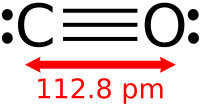
Photo from wikipedia
Abstract Despite the success of solution processed nickel oxide (s-NiOx) as the hole transporting layer (HTL) in organic solar cells, applying s-NiOx in perovskite solar cells (PVSCs) is not that… Click to show full abstract
Abstract Despite the success of solution processed nickel oxide (s-NiOx) as the hole transporting layer (HTL) in organic solar cells, applying s-NiOx in perovskite solar cells (PVSCs) is not that straight forward. The reported power conversion efficiencies (PCEs) of the s-NiOx based PVSCs span a wide range from 8% to over 20% even with a similar recipe. Here, we report that one of the causes for the performance discrepancy might be the large surface dipole on the s-NiOx surface. We find that the perovskite deposited on the as-prepared sol-gel derived s-NiOx has large number of defects at the s-NiOx/perovskite interface. Based on the in-depth mechanism study with various spectroscopy techniques, we propose that the strong surface dipole of the s-NiOx composite film induces adhesion of perovskite precursor ions on the surface of s-NiOx during the perovskite film formation and creates defects in the perovskite crystals at the interface. Such interfacial dipole-ion attachment has been demonstrated can be dissociated by ultraviolet (UV) light soaking experiment. The high energy of the UV light helps to dissociate the physical dipole-ion attachment and mobilize the ions to accommodate the perovskite defect sites. The defect density of the perovskite film on s-NiOx has been significantly reduced by an amount of 4.1 × 1017 cm−3 after the UV light soaking as evidenced by photothermal deflection spectroscopy (PDS) measurement. By treating the s-NiOx surface with a dipolar molecule n-Butylamine, the surface dipole of the s-NiOx film is efficiently reduced and it significantly reduces the defect density in the perovskite film. As a result, the PVSCs based on the n-Butylamine treated s-NiOx layer have achieved a dramatical enhancement in PCE to 18.9% with decent stability at the maximum power point tracking. It is believed that this work provides insight and strategy to develop highly reproducible PVSCs with solution derived metal oxide as interlayers.
Journal Title: Nano Energy
Year Published: 2019
Link to full text (if available)
Share on Social Media: Sign Up to like & get
recommendations!